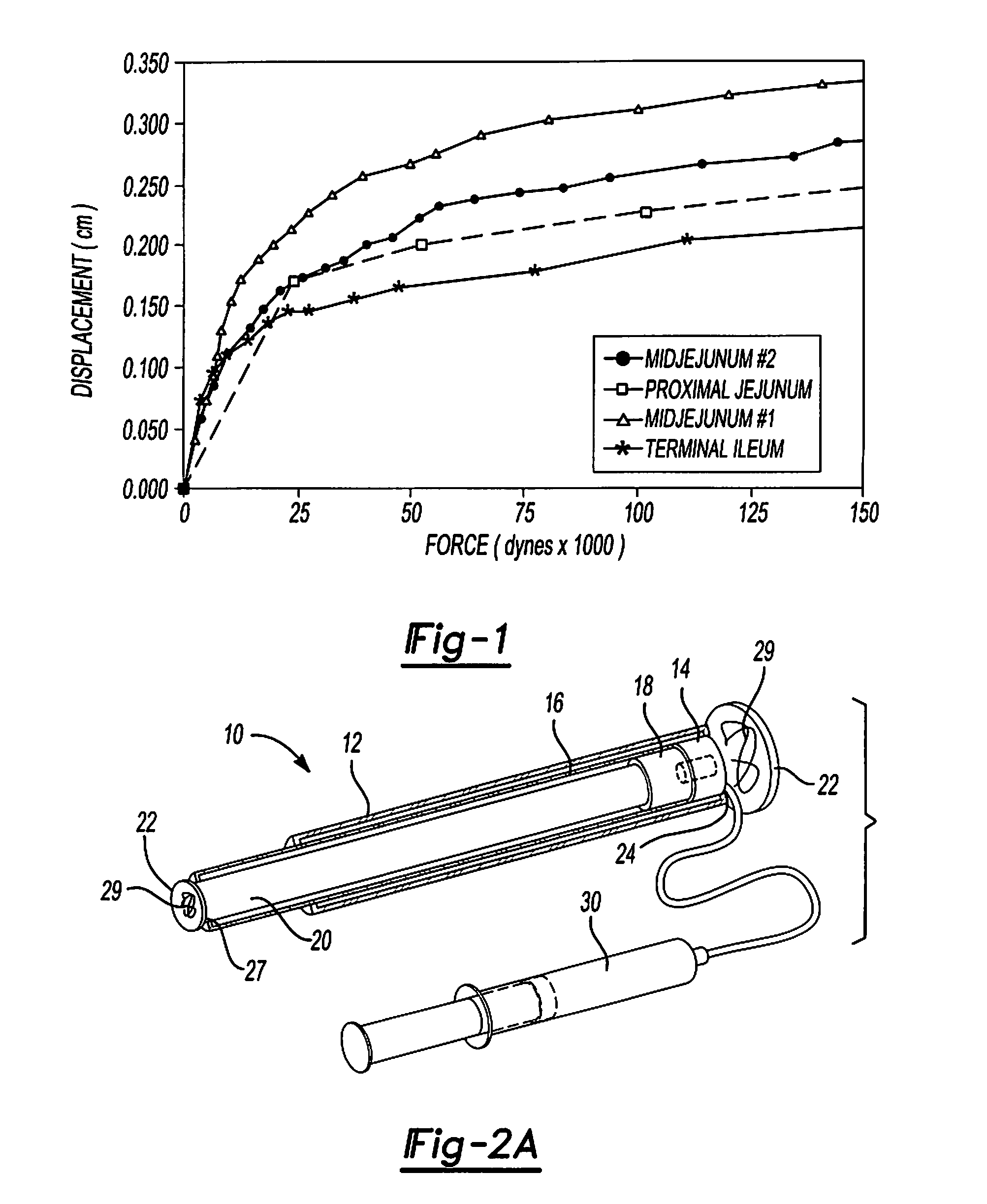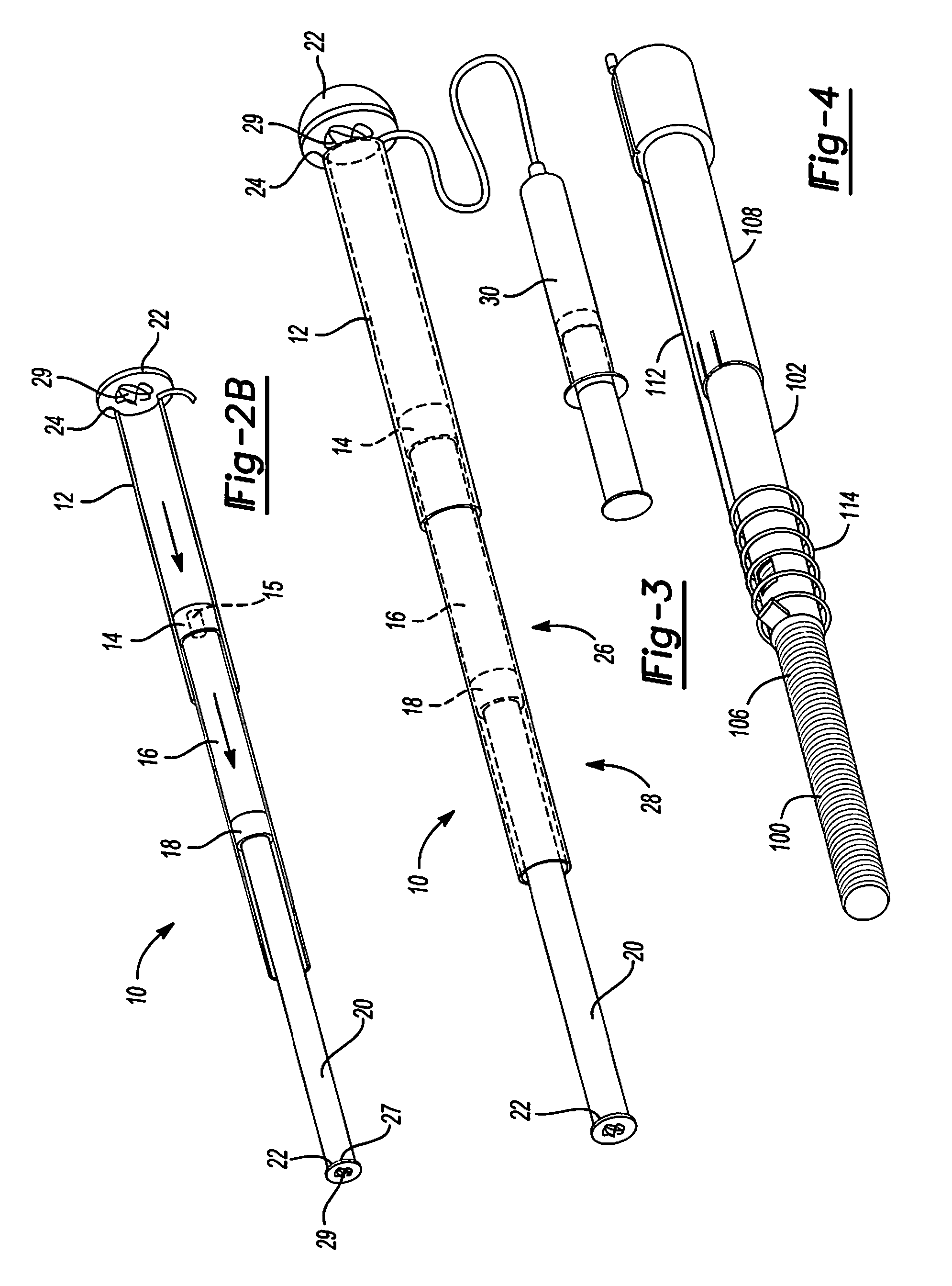Mechanical extension implants for short bowel syndrome
a technology of mechanical extension and implants, applied in the field of mechanical extension implants, can solve the problems of limited effectiveness of the approach, lack of somatic muscle growth, and inability to use the method as a short-term solution, so as to prevent self-sustaining absorption of nutrients, alleviate small bowel syndrome, and reduce the effect of toxicity
- Summary
- Abstract
- Description
- Claims
- Application Information
AI Technical Summary
Benefits of technology
Problems solved by technology
Method used
Image
Examples
Embodiment Construction
[0044]The following description is merely exemplary in nature and is not intended to limit the present disclosure, application, or uses.
[0045]Bowel extenders according to the principles of the present teachings, generally indicated at 10 in the accompanying figures, are designed to operate inside the human body cavity inserted in a section of bowel, which can remain intact in the digestive tract, or can be detached from the digestive tract yet remain attached to the vasculature. In cases where a section of bowel is detached, the remaining bowel can be reattached, thereby maintaining bowel function during the lengthening process. Bowel extender 10 extends gradually, and after treatment, the lengthened bowel segment can be anastomosed back into the digestive tract. It should be appreciated that the power, monitoring, and automatic control components can be integrated within the implanted device.
[0046]For clinical use, the implant design should meet a set of specifications based on the...
PUM
 Login to View More
Login to View More Abstract
Description
Claims
Application Information
 Login to View More
Login to View More - R&D
- Intellectual Property
- Life Sciences
- Materials
- Tech Scout
- Unparalleled Data Quality
- Higher Quality Content
- 60% Fewer Hallucinations
Browse by: Latest US Patents, China's latest patents, Technical Efficacy Thesaurus, Application Domain, Technology Topic, Popular Technical Reports.
© 2025 PatSnap. All rights reserved.Legal|Privacy policy|Modern Slavery Act Transparency Statement|Sitemap|About US| Contact US: help@patsnap.com



